Open standard OSSIRIUS SCS 702
The OSSIRIUS SCS 702 standard sets the order for the use of compact wall cabinets when building structured cabling systems for commercial buildings, and is optimized for servicing objects up to 130,000 sq.m. (with coverage of 368 meters) and up to 1000 users, which determines the set of rules, decisions and technologies included in it. The maximum number of users is limited to 50,000.
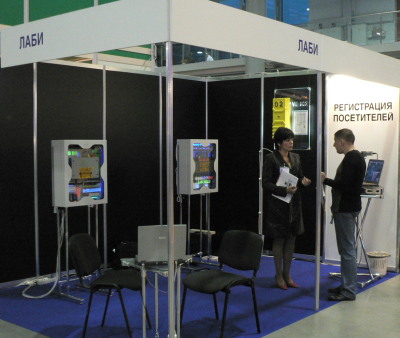
OSSIRIUS SCS 702 is open and independent. The provisions of the standard are formed and modified exclusively during public discussions within the limits specified by the provisions of the international standards ISO / IEC 11801, ANSI / TIA / EIA-568B and the Russian standard GOST R 53246-2008.
')
A standard is a document that establishes requirements for groups of homogeneous or specific products, the rules for its development, production and use. Standards are useful and protect the commercial interests of specific manufacturers.
Want to know which standard is the best in the world? This is the standard of beauty 90-60-90!

Concise, clear and unambiguous. In addition, it is an open standard - everyone is familiar with it, including those who do not approve and support it. With incredible brevity, this is a full-fledged industry standard - it defines the requirements for people, mannequins, hangers, food, etc. the entire fashion industry.
Against this background, closed standards (with paid access) containing many documents, developed as if by “independent” commissions and describing cases where the basic (basic) requirements are inferior to particular moments, look absolutely stupid (in the case of the beauty standard, deviations from the basic requirements It would have sounded like this: “with a sedentary lifestyle and good nutrition, the ratio of 100-120-140 is considered ideal”).
It is to such a stupid category of standards that the international standards of the SCS. Even if we assume that there is at least one person in the world who has familiarized himself with regulatory and information materials on all the many parts of these SCS standards and this person constantly reads Technical System Bulletins, Technical Reports and permanent additions, then ...
... he still will not be able to say anything against the SCS, which are built, for example, according to the principle “we need as many cables in one floor cabinet as we take into it” or “pull the cables to the nearest SCS node, regardless of its location in the hierarchical structure”.
The point here is that in the international standards of the SCS, any deviations from the correct SCS are allowed ... after their description. What SCS specialists and SKS manufacturers, interpreting the international standards of SCS, use in the way they are comfortable with and skillfully use it.
That is why, in order not to produce frankly ugly SCS, the open standard SCS, OSSIRIUS SCS 702, was developed. Concise and unambiguous.
Today, this is the best Russian standard for SCS, since tens of thousands of specialists are really familiar with it, in contrast to international standards, the reading of which for most of the specialists ended in ... name.
The picture that is presented below clearly demonstrates the cable system, which lacks one level of division in the hierarchical structure. As a result of his absence, there is a ubiquitous mess.
Picture 1. Vietnam, external cable networks.
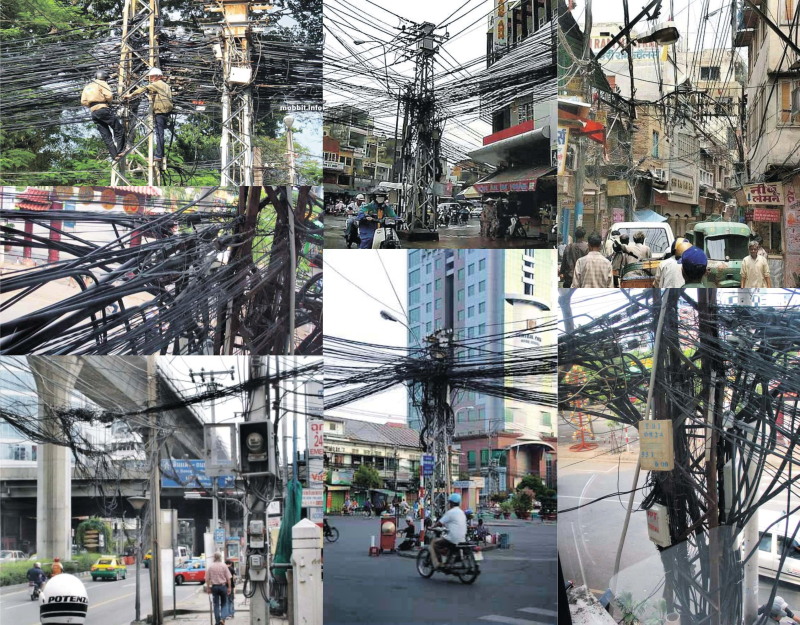
The bottom line is that with a small number of users it is more profitable and easier to pull the cables into one node and, thus, build a single-level system. But this approach inevitably becomes a serious problem with a significant increase in the number of users. What we see on the streets of Vietnam.
With proper design in cable systems, there should be as many levels of division as necessary to obtain the smallest average cable lengths.
Certainly, it is possible, contrary to the logic of building hierarchical systems, to simply invest time and money in “more accurate and competent” laying an innumerable set of cables in metal trays, which today is often observed in various business centers.
Picture 2. Many cables neatly laid in wire trays.
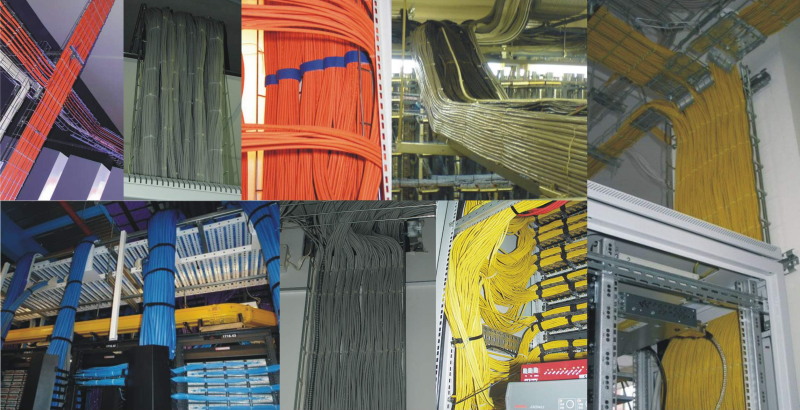
However, such solutions differ from Vietnamese cable systems only externally. In fact, they are equal (in the Vietnamese picture of cables, even less, just that they can be seen by everyone).
Moreover, when building a SCS with a large number of cables, the mess as such is preserved. It only moves to one place, even if hidden from most human eyes - into telecommunication or hardware (server) premises. That's how they look after six months or a year of operation:
Picture 3. Telecommunication and hardware rooms.
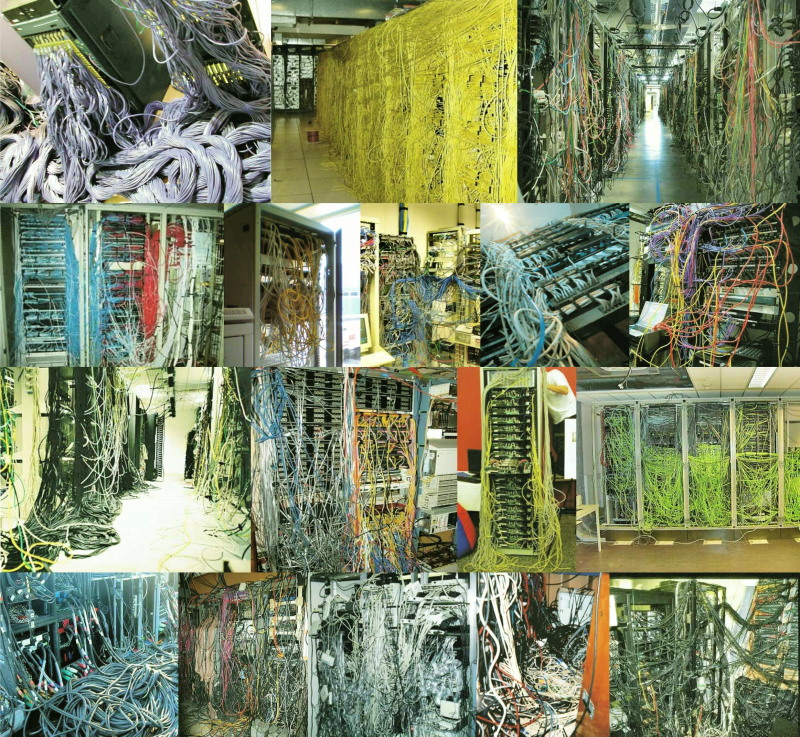
Ways to reduce average cable lengths and unload telecommunication cabinets contain the new Russian standard OSSIRIUS SCS 702, presented to the general public in 2005 in Lenexpo.
This is an open standard. Each designer can use it, and any manufacturer has the right to release the nodes and devices described in it.
It should be noted separately that the open Russian standard of SCS does not contradict common international standards in any point, but it:
- Fully reveals the possibilities inherent in the Model of the digital channel;
- Extends the functions of ordinary Consolidation Points so that they create a new level of division in the hierarchical system - the Level of Work Groups;
- Recognizes the existing practice of using installation and other Ethernet switches in the area of workplaces acceptable for a long time.
As a result, the OSSIRIUS SCS 702 standard repeatedly reduces the number of cables and unloads telecommunications facilities.
View OSSIRIUS SCS 702 OPEN STANDARD.
SCS (see topological diagram) is a strictly ordered set of cables, cable components and switching devices, including:
- Mainline subsystem of the building (connects the distribution hub of the building and the floor nodes);
- The horizontal subsystem (connects the floor nodes to the nodes of the working groups, and the nodes of the working groups - with telecommunications outlets).
One storey hub serves its own floor and two adjacent floors. One workgroup node serves up to 96 ports (48 telecommunication outlets with two ports).

For the organization of SCS nodes according to the OSSIRIUS SCS 702 standard, any compact wall cabinets are suitable, allowing you to simultaneously place 1-2 switches, a cross-panel and an uninterruptible power supply. OSSIRIUS SCS 702-1 wall cabinets (picture below) are designed for organizing SCS nodes with a high port density (with small dimensions), the device and layout of which are an integral part of the OSSIRIUS SCS 702 standard.

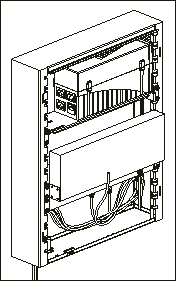
The OSSIRIUS SCS 702 standard allows installation in the floor nodes and work nodes of network switches without intermediate cross-panels. To do this, OSSIRIUS SCS 702-1 cabinets are designed so that in their lower part there is space for laying the half-rings of the ends of the UTP cables. This greatly simplifies and reduces the cost of SCS, while removing any restrictions associated with the categories of switching components of SCS (these components simply do not exist).
When using the OSSIRIUS SCS 702-1 locker, it is possible to install two 48-port switches in the working group nodes (figure below, for clarity, the switches in the figure are turned upside down). Thus one node can serve 96 ports. To install switches in the locker that do not allow the ears to turn, special universal fasteners are made.

Modern digital telephony is not inferior to IP-telephony in terms of communication quality and the number of service functions, and analog telephony outperforms IP-telephony in price. This makes possible the long-term presence of NOT IP telephony in the telecommunications equipment market. Therefore, the OSSIRIUS SCS 702 standard provides support for analog and digital telephony.

To support NOT IP telephony, standard (88P) cross-panels (568, for “RJ45” switching) are installed in workgroup nodes, connected by multi-pair cables with telephone cross-panels (IDC110, Krone) of a separate cabinet (telephone cross) in which - telephone cross-panels connected to the institutional PBX with amphenol cables (with TELCO connectors) are also located.
The lines leading from the telecommunication outlets are connected either to the network switch or to the cross panel. As a result, by connecting the corresponding pairs of telephone cross-panels located in a separate locker (telephone cross), it is possible to connect specific ports of workplaces with specific PBX lines.
Initially, in the absence of other requirements, in the workgroup node, every second port of telecommunication outlets is connected to the cross-panel, and every first port is connected to the network switch. When switching to IP-telephony, additional network switches are installed at workgroup nodes, to which lines previously connected to cross-panels are switched. To support proprietary telephones operating on 2 pairs of conductors, a cross-section cutting circuit of the workgroup node shown below can be used to avoid duplicating the number of pairs in the cable.
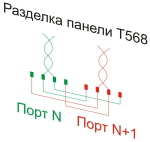
Developer: Andrei Malkov (Labi) (on Habré it is not yet, alas ..)
Developer's site: 1labi.com
Reference standard: 1labi.com/content/view/33/33
Discussion of the standard on the forum: forum.1labi.com/viewforum.php?f=5

OSSIRIUS SCS 702 is open and independent. The provisions of the standard are formed and modified exclusively during public discussions within the limits specified by the provisions of the international standards ISO / IEC 11801, ANSI / TIA / EIA-568B and the Russian standard GOST R 53246-2008.
')
Why do we need an open standard SCS in simple words.
A standard is a document that establishes requirements for groups of homogeneous or specific products, the rules for its development, production and use. Standards are useful and protect the commercial interests of specific manufacturers.
Want to know which standard is the best in the world? This is the standard of beauty 90-60-90!

Concise, clear and unambiguous. In addition, it is an open standard - everyone is familiar with it, including those who do not approve and support it. With incredible brevity, this is a full-fledged industry standard - it defines the requirements for people, mannequins, hangers, food, etc. the entire fashion industry.
Against this background, closed standards (with paid access) containing many documents, developed as if by “independent” commissions and describing cases where the basic (basic) requirements are inferior to particular moments, look absolutely stupid (in the case of the beauty standard, deviations from the basic requirements It would have sounded like this: “with a sedentary lifestyle and good nutrition, the ratio of 100-120-140 is considered ideal”).
It is to such a stupid category of standards that the international standards of the SCS. Even if we assume that there is at least one person in the world who has familiarized himself with regulatory and information materials on all the many parts of these SCS standards and this person constantly reads Technical System Bulletins, Technical Reports and permanent additions, then ...
... he still will not be able to say anything against the SCS, which are built, for example, according to the principle “we need as many cables in one floor cabinet as we take into it” or “pull the cables to the nearest SCS node, regardless of its location in the hierarchical structure”.
The point here is that in the international standards of the SCS, any deviations from the correct SCS are allowed ... after their description. What SCS specialists and SKS manufacturers, interpreting the international standards of SCS, use in the way they are comfortable with and skillfully use it.
That is why, in order not to produce frankly ugly SCS, the open standard SCS, OSSIRIUS SCS 702, was developed. Concise and unambiguous.
Today, this is the best Russian standard for SCS, since tens of thousands of specialists are really familiar with it, in contrast to international standards, the reading of which for most of the specialists ended in ... name.
Why do we need an open standard SKS in pictures.
The picture that is presented below clearly demonstrates the cable system, which lacks one level of division in the hierarchical structure. As a result of his absence, there is a ubiquitous mess.
Picture 1. Vietnam, external cable networks.

The bottom line is that with a small number of users it is more profitable and easier to pull the cables into one node and, thus, build a single-level system. But this approach inevitably becomes a serious problem with a significant increase in the number of users. What we see on the streets of Vietnam.
With proper design in cable systems, there should be as many levels of division as necessary to obtain the smallest average cable lengths.
Certainly, it is possible, contrary to the logic of building hierarchical systems, to simply invest time and money in “more accurate and competent” laying an innumerable set of cables in metal trays, which today is often observed in various business centers.
Picture 2. Many cables neatly laid in wire trays.

However, such solutions differ from Vietnamese cable systems only externally. In fact, they are equal (in the Vietnamese picture of cables, even less, just that they can be seen by everyone).
Moreover, when building a SCS with a large number of cables, the mess as such is preserved. It only moves to one place, even if hidden from most human eyes - into telecommunication or hardware (server) premises. That's how they look after six months or a year of operation:
Picture 3. Telecommunication and hardware rooms.

Ways to reduce average cable lengths and unload telecommunication cabinets contain the new Russian standard OSSIRIUS SCS 702, presented to the general public in 2005 in Lenexpo.
This is an open standard. Each designer can use it, and any manufacturer has the right to release the nodes and devices described in it.
It should be noted separately that the open Russian standard of SCS does not contradict common international standards in any point, but it:
- Fully reveals the possibilities inherent in the Model of the digital channel;
- Extends the functions of ordinary Consolidation Points so that they create a new level of division in the hierarchical system - the Level of Work Groups;
- Recognizes the existing practice of using installation and other Ethernet switches in the area of workplaces acceptable for a long time.
As a result, the OSSIRIUS SCS 702 standard repeatedly reduces the number of cables and unloads telecommunications facilities.
View OSSIRIUS SCS 702 OPEN STANDARD.
Principles of organization of SCS.
SCS (see topological diagram) is a strictly ordered set of cables, cable components and switching devices, including:
- Mainline subsystem of the building (connects the distribution hub of the building and the floor nodes);
- The horizontal subsystem (connects the floor nodes to the nodes of the working groups, and the nodes of the working groups - with telecommunications outlets).
One storey hub serves its own floor and two adjacent floors. One workgroup node serves up to 96 ports (48 telecommunication outlets with two ports).

Device nodes SCS.
For the organization of SCS nodes according to the OSSIRIUS SCS 702 standard, any compact wall cabinets are suitable, allowing you to simultaneously place 1-2 switches, a cross-panel and an uninterruptible power supply. OSSIRIUS SCS 702-1 wall cabinets (picture below) are designed for organizing SCS nodes with a high port density (with small dimensions), the device and layout of which are an integral part of the OSSIRIUS SCS 702 standard.


The OSSIRIUS SCS 702 standard allows installation in the floor nodes and work nodes of network switches without intermediate cross-panels. To do this, OSSIRIUS SCS 702-1 cabinets are designed so that in their lower part there is space for laying the half-rings of the ends of the UTP cables. This greatly simplifies and reduces the cost of SCS, while removing any restrictions associated with the categories of switching components of SCS (these components simply do not exist).
When using the OSSIRIUS SCS 702-1 locker, it is possible to install two 48-port switches in the working group nodes (figure below, for clarity, the switches in the figure are turned upside down). Thus one node can serve 96 ports. To install switches in the locker that do not allow the ears to turn, special universal fasteners are made.

Analog / digital telephony (NOT IP) in the SCS.
Modern digital telephony is not inferior to IP-telephony in terms of communication quality and the number of service functions, and analog telephony outperforms IP-telephony in price. This makes possible the long-term presence of NOT IP telephony in the telecommunications equipment market. Therefore, the OSSIRIUS SCS 702 standard provides support for analog and digital telephony.

To support NOT IP telephony, standard (88P) cross-panels (568, for “RJ45” switching) are installed in workgroup nodes, connected by multi-pair cables with telephone cross-panels (IDC110, Krone) of a separate cabinet (telephone cross) in which - telephone cross-panels connected to the institutional PBX with amphenol cables (with TELCO connectors) are also located.
The lines leading from the telecommunication outlets are connected either to the network switch or to the cross panel. As a result, by connecting the corresponding pairs of telephone cross-panels located in a separate locker (telephone cross), it is possible to connect specific ports of workplaces with specific PBX lines.
Initially, in the absence of other requirements, in the workgroup node, every second port of telecommunication outlets is connected to the cross-panel, and every first port is connected to the network switch. When switching to IP-telephony, additional network switches are installed at workgroup nodes, to which lines previously connected to cross-panels are switched. To support proprietary telephones operating on 2 pairs of conductors, a cross-section cutting circuit of the workgroup node shown below can be used to avoid duplicating the number of pairs in the cable.

Developer: Andrei Malkov (Labi) (on Habré it is not yet, alas ..)
Developer's site: 1labi.com
Reference standard: 1labi.com/content/view/33/33
Discussion of the standard on the forum: forum.1labi.com/viewforum.php?f=5
Source: https://habr.com/ru/post/108400/
All Articles